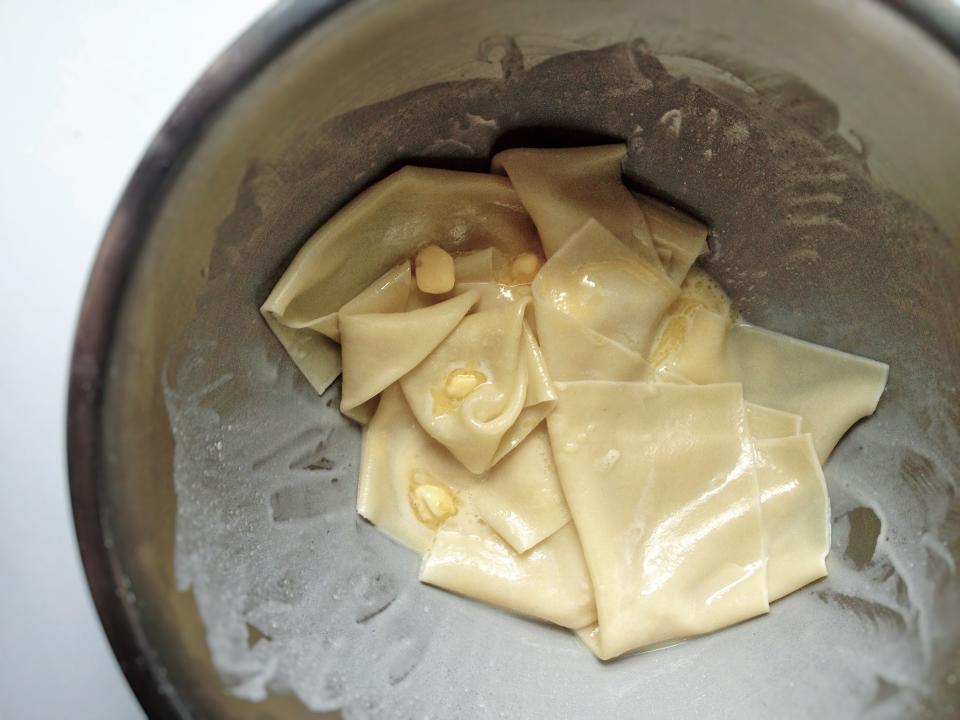This Recipe Convinced Me I Could Do COOK90
I’m an extremely self-taught home cook. And I can also be an extremely self-critical home cook; call it a side effect of being the Type A first-born child. I’ve spent the past twenty years or so reading recipes, watching PBS Sunday afternoon cooking shows, and the occasional Youtube series. I’ve also spent the past twenty years or so trying my best to live up to those recipes and on-screen chefs, and often feeling that I’m falling short. That feeling grows tenfold the moment there’s an audience—even of one, even of someone I love.
I’m okay with breakfast, I’m just fine with a 22-minute dinner, but the moment a recipe even hints at being a project? My pulse starts racing. Can I cook? Have I ever cooked before? I just know there will be at least one stress-related fight before dinner is on the table. And in the back of my mind, I’m certain that after hours of labor, what I put out will never look like what [insert influencer] had in their book.
It’s this line of perfectionist thinking that’s kept me from doing COOK90 in the past. I knew that I’d get three weeks in, forget my lunch at home, and go back to eating food court sushi for lunch. I have immense respect for project-lovers—people who say things like “an entire day in the kitchen is meditative, actually!” For me? Cooking one thing for an entire day sounds like a recipe for heartbreak. And stating publicly that I’ll be cooking all my meals for a month sounds like a fast track to making myself a liar. I’m only going to let myself down. Or at least, that’s what I thought.
In one sense, the “deconstructed lasagne” from Canal House: Cook Something should have been one of those project recipes that made me fray at the edges. It involves a ragu bolognese that simmers for six to seven hours. It has you rolling sheets of fresh pasta and making a stir-constantly besciamella (you know, the white sauce). And a few Sundays ago, the first time I made it, I started the recipe in my usual project-cooking headspace: a low-level panic, exhaling pointedly, insisting that “nothing! Nothing’s wrong!”
But as time passed, something happened: I relaxed.
At some point during those six or seven bolognese hours I was listening to a podcast, while also making the besciamella, and realized I needed to stir the bolognese. (It should be noted that the besciamella is perhaps the most anxiety-inducing step, as it requires constant stirring and a steady pour of milk.)
But before I knew it, and without my heart rate spiking, I was stirring two pots at once.
I didn’t even realize what I’d done until it was over. It just came naturally.
Maybe it’s the way Christopher Hirsheimer and Melissa Hamilton wrote their recipe. It is less of a recipe, I guess, and more of a suggestion—a description of something you might like to eat, formatted as a paragraph, like a note to a friend. In just a few short sentences, Hirsheimer and Hamilton suggest you take some of the ragu bolognese, layer it loosely with some buttered fresh pasta, and simply “whip up” a quick besciamella to turn it into a loose lasagna. It’s all presented so matter-of-factly that there’s no room for self-doubt. “Doesn’t this sound nice, and wouldn’t you like to eat it today? Well, you can. You can do this. You already know what to do,” the recipe seems to say.

Shortly before the stirring-stress-success, I made another empowering choice: I decided in my spirit that I just wasn’t going to mess with fresh pasta that day. Not that I felt I couldn’t do it, but I just felt that I had the power, the agency, to choose not to. I thought of how simply the Canal House authors described the dish. It was an outline I could color in.
I saw the rest of my day ahead of me and decided that what would bring me the most joy was to layer those sauces with some store-bought pasta or some frozen cheese ravioli instead of starting with flour and eggs. And I had no one to please but myself.
Halfway into my first COOK90, I’m still realizing the lessons of this meal: that simplifying isn’t giving up. That “perfection” isn’t possible. That COOK90 gives you three breaks for a reason. That even if you forget to buy brussels sprouts for Anna Stockwell’s winter salad hummus bowls, dinner isn’t going off the rails. It’s going to be fine, and you can do this. You already know what to do.
Ragù Bolognese
Originally Appeared on Epicurious


